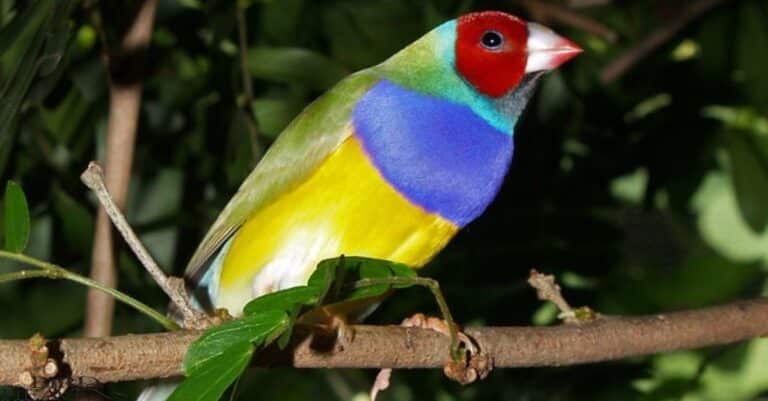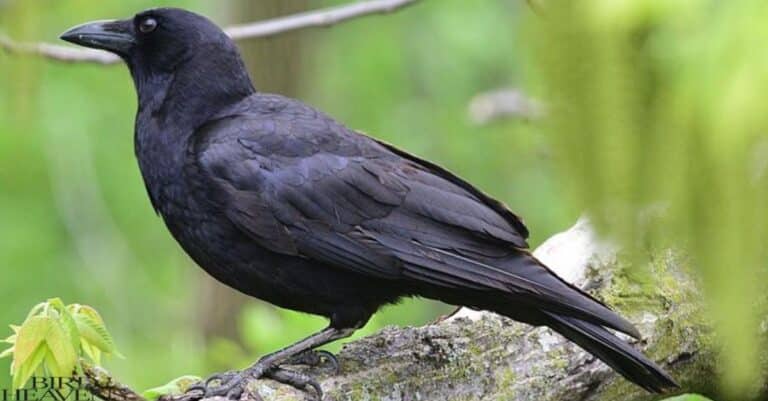Do Robins Mate For Life? The Complete Guide To Robin Romance
Robins don’t mate for life in the strict sense. They practice seasonal monogamy, forming pair bonds that typically last one breeding season.
While some pairs may reunite in subsequent years if they’ve had successful broods, it’s common for robins to choose new mates annually. Their mating strategy balances loyalty within a season with adaptability across years.
Do Robins Mate For Life?
Robins, those cheery harbingers of spring, have long captivated our hearts with their bright red breasts and melodious songs. But beyond their charming appearance lies a fascinating world of avian romance.
What is The Mating Behavior Of Robin?
When it comes to matters of the heart, American Robins display a nuanced approach to relationships. While they don’t mate for life in the strictest sense, these thrush species exhibit a strong tendency towards seasonal monogamy.

Are Robins Truly Monogamous?
Robins typically form pair bonds that last for one breeding season. This means they’ll stick with one partner throughout the spring and summer months when they’re busy raising their young. However, it’s not uncommon for robins to choose new mates each year.
Interesting fact: While not lifelong partners, some robin pairs have been observed reuniting year after year, especially if they’ve had successful breeding seasons together in the past.
Factors Influencing Mate Selection
When it comes to choosing a partner, robins consider several factors:
- Territory quality
- Physical health and appearance
- Song complexity
- Parenting skills (for experienced birds)
Ornithologists have noted that female robins often prefer males with brighter red breasts, as this can be an indicator of good health and foraging ability.
How Robins Attract Their Mates?
Robin romance begins with an elaborate courtship ritual that showcases the best of avian wooing techniques. Male robins take the lead in this dance of love, employing a variety of strategies to catch the eye of potential mates.
Unique Robin Courtship Rituals
- Puffing up: Males will puff out their bright red breasts to appear larger and more impressive.
- Wing-flicking: A quick, repeated flicking of the wings is a common display of interest.
- Tail-fanning: Males spread their tail feathers in a fan-like display, often while hopping around the female.
- Food offering: Some males will present food to females as a way of demonstrating their provider skills.
The Role of Song in Attracting a Partner
A robin’s song plays a crucial role in the mating process. Male robins use their melodious voices to:
- Establish and defend territory
- Attract females
- Communicate with their chosen mate
Did you know? Male robins can sing up to 100 different variations of their signature song, with each individual having its own unique vocal fingerprint.
Nesting and Reproduction: Building a Home for Love
Once a pair bond is formed, robins waste no time in preparing for their future family. The nesting process is a team effort that strengthens the couple’s bond.

Nest Building: A Robin Team Effort
| Task | Responsibility |
| Site selection | Female |
| Gathering materials | Both male & female |
| Construction | Primarily female |
| Nest defense | Both male & female |
Robins typically build their nests in trees or shrubs, about 5-15 feet off the ground. They use a combination of grass, twigs, and mud to create a sturdy cup-shaped structure.
Egg-Laying and Incubation Periods
- Clutch size: 3-5 eggs
- Egg color: Iconic “robin’s egg blue”
- Incubation period: 12-14 days
- Primary incubator: Female
During incubation, the male robin takes on the role of protector and provider, bringing food to his mate and defending the nest from potential threats.
How Often Do Robins Breed Each Year?
American Robins are prolific breeders, often producing 2-3 clutches per breeding season. This high reproductive rate helps offset the relatively low survival rate of robin fledglings.
Robin Parenting: How Moms and Dads Care for Their Young?
When it comes to raising their young, robins are devoted parents. Both male and female robins play active roles in caring for their chicks, showcasing impressive teamwork.

Division of Labor Between Male and Female Robins
- Feeding: Both parents feed the chicks, making hundreds of trips per day to satisfy hungry mouths.
- Brooding: Primarily the female’s responsibility, especially in the first few days after hatching.
- Nest sanitation: Both parents remove fecal sacs to keep the nest clean.
- Protection: Both male and female robins fiercely defend their nest and young from predators.
How Long Do Robin Chicks Stay with Their Parents?
Robin chicks develop quickly:
- Hatching: Chicks emerge from eggs after 12-14 days of incubation.
- Nestling stage: Lasts about 13 days, during which chicks are completely dependent on parents.
- Fledgling stage: Chicks leave the nest but stay nearby, still relying on parents for food and protection for up to 2 weeks.
Case study:
A 2018 study in urban Ohio found that robin parents continued to feed and protect their fledglings for an average of 10.3 days after they left the nest, highlighting the extended care these birds provide.
You Might Like >>Owls In Michigan
Challenges to Robin Relationships: Love in a Changing World
While robins have proven to be adaptable birds, they face numerous challenges that can impact their mating and breeding success.

Impact of Habitat Loss on Mating Patterns
As urban development encroaches on natural areas, robins must adapt to new environments. This can lead to:
- Increased competition for suitable nesting sites
- Changes in food availability
- Altered singing patterns due to noise pollution
Predators and Their Effect on Robin Pairs
Common predators of robins and their nests include:
- Cats
- Raccoons
- Snakes
- Blue jays and crows
The constant threat of predation can stress robin pairs and potentially impact their breeding success.
Climate Change: A New Threat to Robin Romance
Rising global temperatures are altering the timing of spring, which can disrupt the delicate balance of robin breeding cycles:
- Earlier springs may lead to mismatches between nesting times and peak food availability.
- More frequent extreme weather events can destroy nests and reduce breeding success.
You Might Like >>Do Geese Fly At Night? How Can They See?
Robin Lifespan and Long-term Partnerships:
Understanding the lifespan of robins provides context for their mating habits and the potential for long-term partnerships.
Average Lifespan of Robins in the Wild
- Typical lifespan: 2-6 years
- Record longevity: Up to 14 years (rare)
Factors Affecting Robin Longevity
- Predation
- Disease
- Harsh weather conditions
- Human-related hazards (e.g., window collisions, pesticides)
Do Robins Reunite with Previous Mates Each Year?
While not guaranteed, some robins do reunite with previous partners if both birds return to the same breeding grounds. Factors influencing reunion include:
- Previous breeding success
- Territory quality
- Individual recognition
Robin pairs that have successfully raised broods together in the past are more likely to reunite in subsequent years. It’s a testament to the benefits of familiarity in the avian world. – Dr. Emma Fieldstone, Avian Behavior Specialist
Comparing Robin Romance to Other Birds:
To truly appreciate robin mating habits, it’s helpful to compare them to other bird species.
| Species | Mating System | Partner Fidelity | Breeding Frequency |
| Robins | Seasonal monogamy | Variable | 2-3 clutches/year |
| Bald Eagles | Long-term monogamy | High | 1 clutch/year |
| House Wrens | Serial monogamy | Low | 2-3 clutches/year |
| Penguins | Long-term monogamy | High | 1 clutch/year |
What makes robin partnerships unique is their balance between loyalty and adaptability. While not bound to one partner for life, robins often demonstrate strong pair bonds within each breeding season.
You Might Like >>Why Are House Sparrows Bad?
Fascinating Robin Romance Facts
Let’s wrap up with some intriguing tidbits about robin love lives:
- Speed dating: Robins can form new pair bonds within 24 hours if a mate is lost.
- Singing sensation: Male robins sing up to 70 times per minute during peak courtship.
- Super parents: A pair of robins can feed their nestlings up to 100 times per day.
- Nest architects: Female robins can build a nest in as little as two days.
- Early birds: Robins are often among the first birds to start nesting in spring.
You Might Like >>Finches in North Carolina
Conservation and Supporting Robin Populations
As backyard birds and beloved harbingers of spring, American Robins hold a special place in our hearts. Here’s how we can help support their populations and ensure many more years of robin romance:
- Plant native species: Robins love fruit-bearing trees and shrubs.
- Provide water sources: Birdbaths are essential for drinking and bathing.
- Reduce pesticide use: This ensures a healthy insect population for robins to feed on.
- Keep cats indoors: Domestic cats are a major predator of robins and other songbirds.
- Participate in citizen science: Join projects like the Christmas Bird Count to help track robin populations.
You Might Like >>Why Do Geese Honk When They Fly
Conclusion:
American Robins exhibit fascinating mating behaviors that blend seasonal monogamy with occasional long-term partnerships. While they don’t mate for life, their relationships are influenced by both individual choices and environmental factors.
Understanding their intricate mating rituals enhances our appreciation of these birds, reminding us of their role in brightening our gardens and parks. Next time you see a robin, remember there’s more to their presence than just heralding spring they symbolize nature’s ongoing romance and renewal.

Andrew Paul is a renowned ornithologist and founder of Bird Heavens. With my extensive expertise in bird behavior and habitat preservation,I will insightful content on species identification and conservation.My Future plans include interactive workshops and online courses to foster a global community of bird enthusiasts committed to conservation and appreciating avian life. Join me at Bird Heavens







